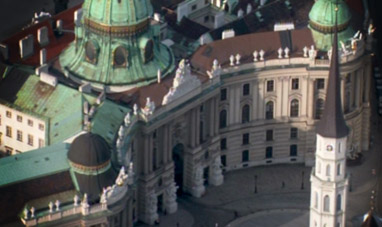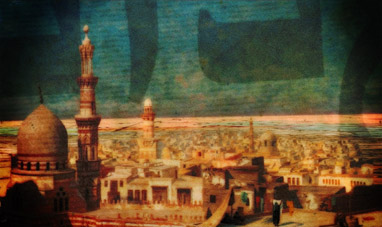The word “acropolis,” from the Greek ácros, or extreme and pólis, city, indicates the highest part of the ancient city.
The acropolis of Athens, in Greece, is a calcareous hill approximately 156 meters above sea level.
In the sixth century BC it became the site of a temple dedicated to Athena, the city’s patron goddess.
The sanctuary was destroyed in the fifth century BC when the Persians besieged Athens and tried, without success, to conquer Greece.
The buildings still visible today on the acropolis date to the second half of the fifth century BC, when Pericles rose to power. The strategist planned an ambitious architectural project for the site and entrusted supervision of the work to the Greek architect and sculptor Phidias.
Between 447 and 432 BC the Parthenon, a sanctuary dedicated to the goddess Athena Parthènos, in other words the Virgin Athena, was built atop the acropolis.
It is 69 meters long and 30 meters wide, and decorated on all sides with sculptures representing gods.
In ancient times Phidias created an enormous gold and ivory statue of the goddess that was kept inside the temple. Today, only copies of this statue remain.
The Propylaea, marble gateways that provided access to the acropolis, were built between 437 and 432 BC.
An ionic temple dedicated to Nike was erected alongside the porticoes and decorated on all sides by a bas-relief recalling the clashes between Greeks and the Persians.
The Erechtheum, a temple dedicated to Athens and Poseidon, was constructed between 421 and 409 BC.
It boasts the Caryatids’ porch on one side, where columns are replaced by weight-bearing female figures.
In the early centuries AD, soldiers from northern Europe invaded Greece, and the Acropolis was sacked and severely damaged.
In 1687, the Parthenon was bombarded and largely destroyed by the Venetians as they attempted to conquer the city.
Early in the 19th century, English diplomat Lord Elgin obtained permission from local authorities to remove decorations from the Parthenon and other buildings.
These decorations were bought by the British Museum in London, where they are still on display today. The Greeks have been requesting their return for years.
New excavations and extensive restoration work are currently underway.
The monuments on the acropolis were created as an expression of Athenians’ devotion to Athena, the goddess of wisdom and the city’s protector.
Today, the Acropolis continues to symbolize the cultural, economic and political apex Athens achieved between the fifth and fourth centuries BC.
The acropolis of Athens, in Greece, is a calcareous hill approximately 156 meters above sea level.
In the sixth century BC it became the site of a temple dedicated to Athena, the city’s patron goddess.
The sanctuary was destroyed in the fifth century BC when the Persians besieged Athens and tried, without success, to conquer Greece.
The buildings still visible today on the acropolis date to the second half of the fifth century BC, when Pericles rose to power. The strategist planned an ambitious architectural project for the site and entrusted supervision of the work to the Greek architect and sculptor Phidias.
Between 447 and 432 BC the Parthenon, a sanctuary dedicated to the goddess Athena Parthènos, in other words the Virgin Athena, was built atop the acropolis.
It is 69 meters long and 30 meters wide, and decorated on all sides with sculptures representing gods.
In ancient times Phidias created an enormous gold and ivory statue of the goddess that was kept inside the temple. Today, only copies of this statue remain.
The Propylaea, marble gateways that provided access to the acropolis, were built between 437 and 432 BC.
An ionic temple dedicated to Nike was erected alongside the porticoes and decorated on all sides by a bas-relief recalling the clashes between Greeks and the Persians.
The Erechtheum, a temple dedicated to Athens and Poseidon, was constructed between 421 and 409 BC.
It boasts the Caryatids’ porch on one side, where columns are replaced by weight-bearing female figures.
In the early centuries AD, soldiers from northern Europe invaded Greece, and the Acropolis was sacked and severely damaged.
In 1687, the Parthenon was bombarded and largely destroyed by the Venetians as they attempted to conquer the city.
Early in the 19th century, English diplomat Lord Elgin obtained permission from local authorities to remove decorations from the Parthenon and other buildings.
These decorations were bought by the British Museum in London, where they are still on display today. The Greeks have been requesting their return for years.
New excavations and extensive restoration work are currently underway.
The monuments on the acropolis were created as an expression of Athenians’ devotion to Athena, the goddess of wisdom and the city’s protector.
Today, the Acropolis continues to symbolize the cultural, economic and political apex Athens achieved between the fifth and fourth centuries BC.
RELATED


TOKYO


SHEPHERD'S PIE


NEW DELHI


PARIS


BEIJING


RATATOUILLE


RIO DE JANEIRO


BRAZIL


VIENNA


SYDNEY OPERA HOUSE


VODKA


SCALOPPINE IN WHITE WINE SAUCE


THE PANAMA CANAL


GREEK CUISINE


SHANGHAI


MOSCARDINI WITH PEAS


MOUSSAKA


DUBAI


BAGHDAD


HAGIA SOPHIA


CHOCOLATE SALAMI


SWEET AND SOUR PORK


SHRIMP RISOTTO


LIVER ALLA VENEZIANA


PHIDIAS


MAYAN MONUMENTS: UXMAL, TIKAL AND PALENQUE


PASTA CACIO E PEPE


EURIPIDES


MADRID


VITELLO TONNATO


AMSTERDAM


RABBIT ALLA CACCIATORE


BAVARIAN CUISINE


CARIBBEAN CUISINE


KOREAN CUISINE


ABU DHABI
